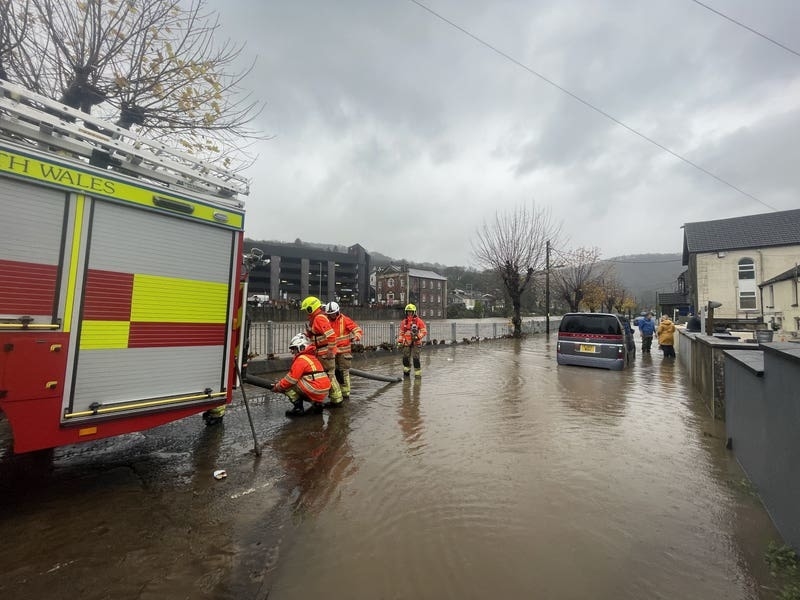By Mick Le Moignan
THE fundamental difficulty with most environmental pollution is the long time-lag between land, air or water being damaged and the harm being detected, measured and, if possible, rectified.
Early coal miners, oil and gas prospectors and their successors were richly rewarded for providing fuel for domestic use and then energy for transport and industry. They had no idea that future side-effects would overheat our climate and cause catastrophic weather, rising sea levels, plastic pollution, wildfires, floods and famines.
As large areas of sub-Saharan Africa become uninhabitable and some Asian and Pacific nations are submerged, there will be mass migrations and probably wars over vital resources such as land and water.
When courts seek to punish perpetrators and demand reparation, we can all legitimately disclaim responsibility. Like children fighting in a playground, we protest: “Don’t blame us! We didn’t start it.”
Each nation’s responsibility for carbon emissions is limited to the fossil fuels it burns. Australia takes no responsibility for the iron, oil, coal and gas it sells to China and other countries. It’s like selling guns or other weapons and then claiming you didn’t know they would be used to kill people.
I recently had a personal experience of this chain of responsibility. While preparing half an acre of land in Suffolk for planning permission and house construction, I learned that my old orchard was contaminated with patches of lead and arsenic. I don’t know how this happened: maybe previous owners spilled or dumped some paint or pesticide, thinking it would disperse harmlessly. As they are long gone, I had to pay for the remediation myself.
These reflections are prompted by further consideration of the worldwide problem of PFAS (per- and poly-fluoroalkyl substances). They are widely used oil, grease, heat and stain-resistant “forever chemicals” which do not break down in either our bodies or the environment.
Many PFAS have been produced for over 50 years by the American company 3M for use in everyday products, including cosmetics, skin cream, rinse aid, food packaging, non-stick pans and water-resistant outdoor clothing.
In Australia, USA, Jersey and elsewhere, they permeated the water table when fire-fighting foam containing PFAS was washed away from airports and other fire practice zones. The vital questions are: how dangerous are PFAS? And whose job is it to get rid of them?
Jersey Water has had to manage the impact of PFAS pollution since 1989, while meeting increasingly stringent water-quality standards. The company’s water quality manager, Jeanette Sheldon, says: “Our policy is to minimise PFAS as much as possible, by not using the most contaminated sources – the Pont Marquet stream or our St Ouen’s boreholes.”
After my column about PFAS in Jersey on 2 September, Jersey Water asked me to correct an inaccuracy, which I am happy to do.
I quoted from an independent 2022 report: “JNWW are not eliminating PFAS by removal, they are blending these toxins to levels below Jersey’s adopted limit of 1ppb (1,000ppt) to comply with local legislation.”
Jersey has no specific legislated limit on PFAS in drinking water, but Jersey Water currently observes the limit set by both EU Directive and the UK’s Drinking Water Inspectorate, which is NOT 1ppb, but 0.1 ppb, equal to 100 parts per trillion (ppt), or 100 nanograms/litre. Jersey Water say they consistently achieve much lower concentrations.
In the USA last April, the Environmental Protection Agency drastically reduced American limits on PFAS in drinking water to 4ppt for PFOA and PFOS and 10ppt for three other types of PFAS. This was after 3M settled an environmental damage lawsuit for over US$10 billion and the WHO last year declared PFOA carcinogenic in humans. More extensive personal injury actions are still pending.
AP News reported that the EPA believes there is no safe level for some PFAS: “EPA administrator Michael Regan says the rule is the most important action the EPA has ever taken on PFAS. ‘The result is a comprehensive and life-changing rule, one that will improve the health and vitality of so many communities across our country,’ said Regan.
“The EPA estimates the rule will cost about $1.5 billion to implement each year, but doing so will prevent nearly 10,000 deaths over decades and significantly reduce serious illnesses.
‘“It’s that accumulation that’s the problem,” said Scott Belcher, a North Carolina State University professor who researches PFAS toxicity. “Even tiny, tiny, tiny amounts each time you take a drink of water over your lifetime is going to keep adding up, leading to the health effects.”’ PFAS are also absorbed from various foods and other environmental sources.
Understandably, US water utility companies have objected strongly to the revised limits, which apply from 2029. Jersey Water, majority-owned by the government, is also obliged to remedy pollution it did not cause.
Furthermore, the Island’s hands are tied by a Deed of Settlement with 3M, approved by the States (36-12) in a closed session in January 2005 and signed by Harbours and Airport Committee chairman, Senator Len Norman. For compensation of £2.6 million, the government agreed never to pursue further claims against 3M for PFAS pollution around the Airport and promised to help the company to defend any future lawsuits brought against it by individuals or companies in Jersey.
At the time, the Health Committee, chaired by Senator Stuart Syvret, advised against signing the agreement, arguing presciently in a written opinion: “The science of PFOS and related chemicals is in its infancy. It is likely that within, say, ten years, we will know far more about the health impact of this chemical on human health.”
When Bailiwick Express revealed details of the agreement in 2021, a government spokesman said: “The national public health authorities in Australia, Canada and the USA have all concluded there is no evidence confirming adverse effects on human health caused by exposure to PFAS and that no specific health screening is appropriate or warranted.”
Even if that was true three years ago, it is now certainly not the case.
Having let the originator off so lightly, Jersey’s government may one day have to start removing forever chemicals from the environment. Once again, those who didn’t call the tune may have to pay the piper.
Breaking news: As well as the Australian Senate Committee on PFAS, set up in August, the NSW Government last week launched a parliamentary inquiry into PFAS after water authorities closed a seriously contaminated reservoir in the Blue Mountains.






